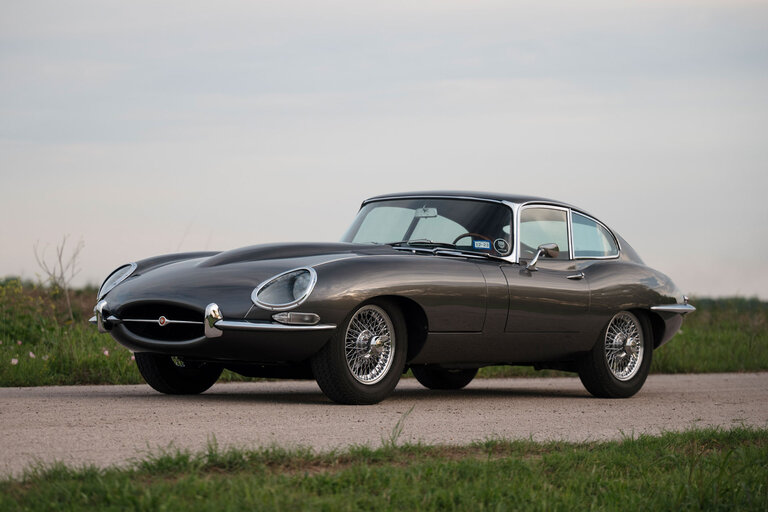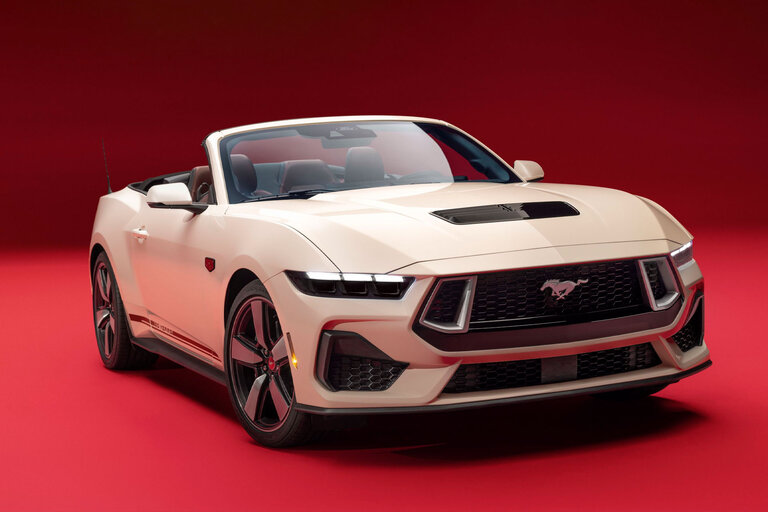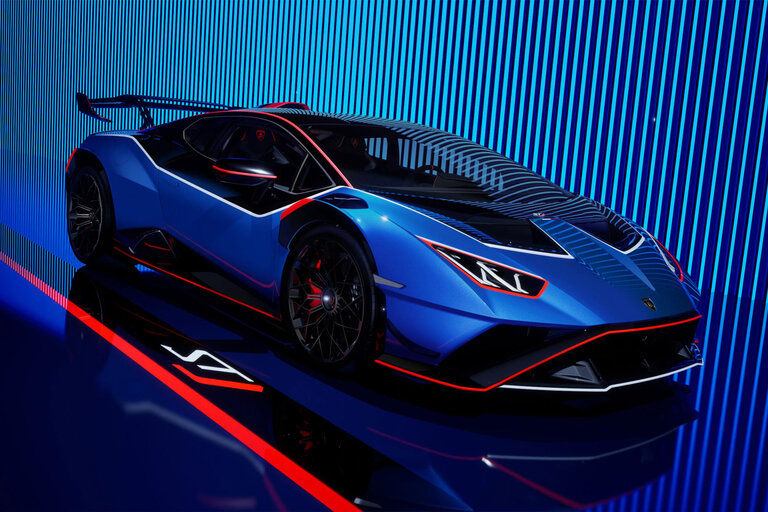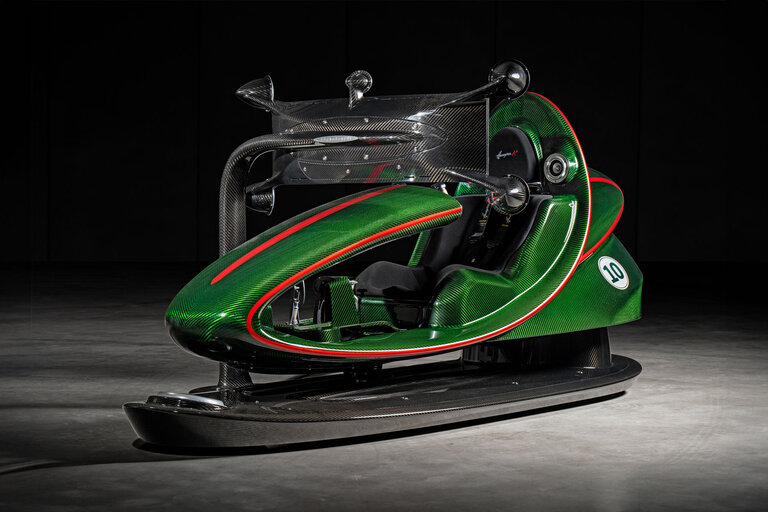
There’s a tiny little gas station tucked away in the California hills between Lake Elizabeth and Castaic. We know, because we nearly kissed the ground in relief when pulling up to it on fumes to refill Shiv Pathak’s modified 2021 Toyota Supra. It’s not that the Supra gets poor fuel economy, but rather that we enjoyed driving it so much that we didn’t stop until we absolutely had to. This car turns corners into potato chips—you always want one more. Then one more again, until the quarter-tank of gas that seemed like more than enough for a quick spin around the neighborhood turns into a low fuel light miles away from where you started.
Pathak’s version of the Supra is subtly spiced. It takes a sharp eye to notice any changes other than the Yokohama Advan A052 tires on 18-inch bronze wheels that replace the stock 19-inch Michelins. Look closer and you’ll see front dive planes whiskering the nose, and in the rear, a delicate diffuser hanging below the exhaust. The tire change alone makes the car a delight; the cushioning effect of the taller sidewalls and flypaper stick of the Advans make bumps disappear and corners straighten. Tune up the engine to Pathak’s claimed 500 horsepower and take away some of the slight resistance in the stock Supra’s steering and you’ve got an excellent car made irresistible.
Improving the Supra is a tall order. There isn’t a C/D staffer who doesn’t like it straight from the factory. It looks lumpy in an exciting way, like a vehicle penned by that kid in fifth grade who drew superheroes with 12-pack abs. With a turbocharged 3.0-liter inline-six, it’s a 12-second drag racer that can pull more than 1.00 g on the skidpad and still get fuel mileage in the high 20s mpg (We averaged 26 mpg with our long-term 2020 Supra 3.0.) Pathak’s company, OpenFlash Performance, which specializes in tweaking ECUs for stronger horses and expanded torque ranges, felt that almost perfect wasn’t good enough.
“I didn’t like the car when I got it,” he says. “I didn’t like the steering, I didn’t like the squishy bushings. I wanted more power. (Dang, Shiv, you’re hard to please—Ed.) But I also didn’t want to do a typical tuner car—900 horses with none of it in the usable range, heat issues, stiff anti-roll bars and springs. I only wanted to do things that wouldn’t sacrifice compliance, sound, and emissions. I wanted to make it like an OEM deal—like a stock Supra, only better.”
The resulting build takes the tiniest of stutters and slop in the already-good stock Supra and bumps up the power. On a straightaway, it bounds forward with all the promise designed into its muscular haunches. Throw it into a corner and it comes out just where you expect it. Miscalculate and it forgives you. “Easily gathered” is how technical editor David Beard described it after running it through its paces on our California test track. Compared to the stock 2021 Supra 3.0’s test results, Pathak’s Supra picked up 0.02 g around the skidpad (1.04 versus 1.02) and half a second both to 60 mph (3.3 seconds versus 3.8) and through the quarter-mile (11.6 seconds compared to 12.1). Its sticky tires also helped it stop quickly, halting from 70 mph in just 147 feet—five fewer feet than the standard model. On the road, it feels invincible, strongly pulling high into its rev range and responding to throttle inputs like a trained dolphin—up on its tail, whistling, and ready to jump through hoops. If you can resist the draw of the Supra’s high-rpm surge, it’s well behaved at parking-lot speeds, too. There’s none of the clashing and banging one expects of a modified car. It feels like a stock Supra, only better.
“We didn’t want the typical whiz-bang turbo car that only works at the drag strip or on the dyno,” says Pathak, whose company also worked on a Lamborghini Urus that we tested not long ago. The “we” is OpenFlash, which did the tuning, but also SPL Parts and Verus Engineering, which handled the non-ECU-related components, including the aero bits and suspension. The Concord, California-based shop The Racers Line did the installation of the hard components. Partnership on builds is common between these companies. “You don’t want me physically touching any part that might fall off,” Pathak tells us, although he did successfully remove and reinstall a wheel so we could get a better look at the SPL suspension pieces—and it didn’t fall off. Behind those wheels—lightweight Apex EC-7R rollers—Pathak pointed out the SPL upper and lower front control arms and rear toe and traction links. Less easy to see, yet dramatic in refining the car’s feel on the road, were SPL’s adjustable Teflon-lined spherical bushings that replaced the stock rubber units.
Pathak says replacing the rubber in the suspension is what gives his build its quick responses and consistent road feel. Rubber deflects and binds up during hard cornering, acceleration, and stopping, which comes through the steering wheel as spongey dead spots. When that sponginess releases, it can result in unexpected midcorner twitches or an unsettledness under braking. The common tuner solution is stiffer springs and anti-roll bars, but then you end up with an unforgiving ride that beats you up over any but the smoothest pavement. “I learned this from the Ferrari 458,” says Pathak. “It’s my favorite car in the world, and they (Ferrari) gave it a lot of (suspension) travel. They knew that to use super stiff springs means super stiff bushings and bracing, and then you have a race car, not a road car.” You want some give, he says, but in predictable places like the tire sidewall and the suspension, not in the connections between components.
He takes a similar approach to the engine tune, which is designed to offer the most noticeable driving improvements without touching any emissions equipment or causing any overheating or reliability issues. Big dyno numbers, like big anti-roll bars, may impress in online forums, but it’s usable, consistent power that makes you want to stay behind the wheel. Pathak says the tune adds about 118 horsepower to the stock Supra 3.0’s 382, with a focus on part-throttle responsiveness. That’s what gives it such a willingness out of corners, making it feel more powerful than it is.
Most of OpenFlash Performance’s builds are done as test mules for customer software updates. That was Pathak’s original intent with this Supra, but he was stymied by an ECU lockdown in mid-2021. “There are workarounds,” he says of overcoming the car’s electronic barriers, “but they aren’t something I’d ask a customer to do.” Instead, the Supra became a personal project car, allowing Pathak and his partners to work on their theory of combining comfort with performance to fight the stereotype of the undrivable tuner car. “You don’t have to have a stiff, unyielding car for it to perform brilliantly at the limit.” While we’re still imagining taking his brilliant Supra out one more time, Pathak has moved on. He’s already planning mods for the new Subaru BRZ and Toyota GR86. If we get a chance to drive them, we’ll make sure to start with a full tank of gas.
This content is created and maintained by a third party, and imported onto this page to help users provide their email addresses. You may be able to find more information about this and similar content at piano.io
#Modified #Toyota #Supra #Enhances #Greatness
Source link





